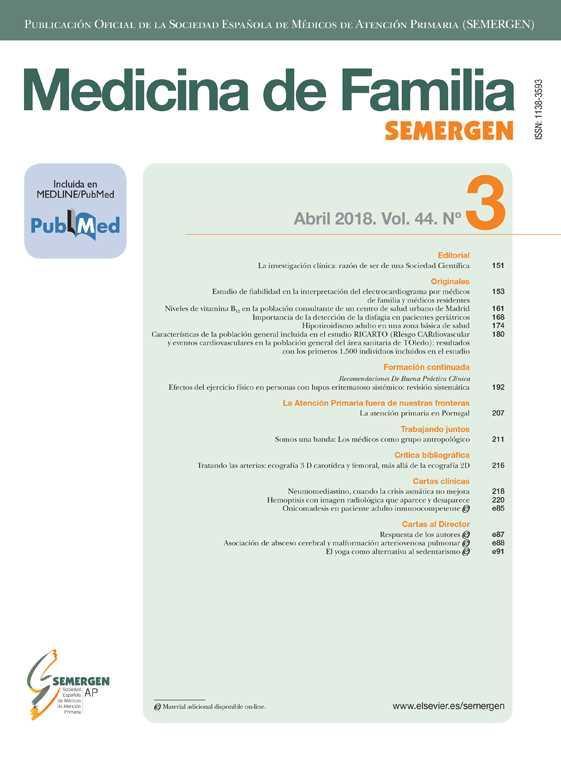Identificar predictores de evolución desfavorable (ingreso hospitalario y/o fallecimiento) en los pacientes con COVID-19 confirmada durante el primer semestre de la pandemia (01-03-2020 al 31-08-2020) en 2 áreas sanitarias de Extremadura.
Pacientes y métodosEstudio observacional, analítico y ambispectivo, con 2 años de seguimiento. Se excluyeron a los pacientes con documentación clínica incompleta o ausencia de confirmación diagnóstica. Se excluyeron 216 pacientes y la muestra final fue de 1.422. Se incluyeron características clínicas, sociodemográficas, comorbilidades y evolución de la infección. Se realizó un análisis multivariante para identificar predictores de consultas a servicios de urgencias hospitalarias (SUH), ingresos y mortalidad.
ResultadosEdad media: 45,6 años; el 53,2% mujeres. El 14,2% presentó evolución desfavorable y el 2,0% falleció. En el análisis multivariante, la edad fue predictora de asistencia a SUH, ingreso hospitalario y muerte. La mayor odds ratio (OR) de mortalidad en la población general y en hospitalizados fue la presencia de enfermedades autoinmunes o trasplantes: OR: 9,02; intervalo de confianza al 95% (IC 95%): 1,72-47,21 y OR: 8,06; IC 95%: 1,17-55,53, respectivamente. Las principales predictoras de consulta a SUH fueron enfermedad autoinmune o trasplante, enfermedad pulmonar obstructiva crónica y enfermedades cardiovasculares. El informe de derivación realizado por el médico de familia (MF) fue la variable con mayor capacidad predictiva de ingreso hospitalario o evolución desfavorable en la población general (OR: 44,15; IC 95%: 27,14-71,83 y OR: 43,29; IC 95%: 26,28-71,29, respectivamente).
ConclusionesEl informe de derivación al SUH del MF fue el predictor más potente de ingreso hospitalario y evolución desfavorable.
To identify predictive variables of unfavorable clinical evolution (hospital admission and/or death) in patients with COVID-19 during the first half of the pandemic (01-03-2020 to 31-08-2020) in two health areas of Extremadura.
Patients and methodsObservational, analytical and ambispective study with a two-year follow-up. Patients with incomplete clinical documentation or without confirmed diagnosis where excluded. A total of 216 patients were excluded, resulting in a final sample of 1422 patients. Clinical and sociodemographic characteristics, comorbidities, and the course of the infection were included. A multivariate analysis was performed to identify predictors of hospital emergency department (HED) visits, hospital admissions, and mortality.
ResultsMean age 45.6 years; 53.2% women. 14.2% of patients had an unfavorable clinical evolution and 2.0% died. Age was a predictor of HED visits, hospital admission and death. The highest odds ratio (OR) for mortality in both general population and hospitalized patients was associated with the presence of autoimmune diseases or organ transplants: OR: 9.02; 95% confidence interval (95% CI): 1.72-47.21 and OR: 8.06; 95% CI: 1.17-55.53, respectively. Predictors of HED visits included autoimmune disease or transplant, chronic obstructive pulmonary disease, and cardiovascular diseases. The referral report made by the family physician (FP) was the variable with the greatest predictive capacity for hospital admission or unfavorable outcome in the general population (OR: 44.15; 95% CI: 27.14-71.83 and OR: 43.29; 95% CI: 26.28-71.29, respectively).
ConclusionsThe referral report to the HED by the FP was the strongest predictor of hospital admission and unfavorable outcome.
Artículo
Diríjase al área privada de socios de la web de la SEMERGEN, (https://www.semergen.es/index.php?seccion=biblioteca&subSeccion=revistaSEMERGEN ) y autentifíquese.












